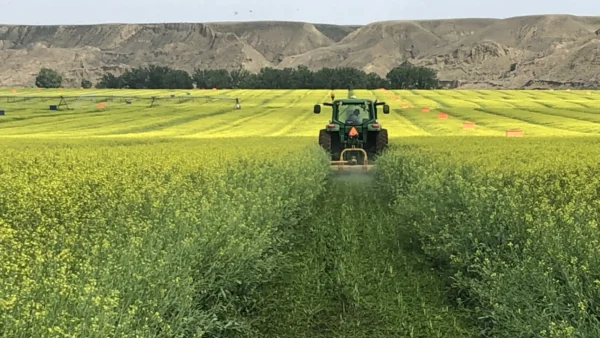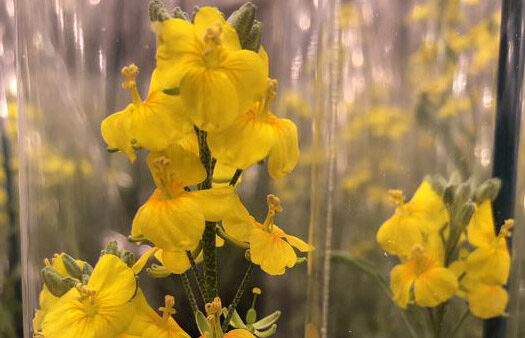The American Seed Trade Association sees opportunities on the horizon… along with some bumpy roads.
With every bumpy path on the horizon, there always comes the smooth and easy road. The same is true for agriculture — with every challenge dawning, there’s an opportunity and solution following behind.
At the American Seed Trade Association’s (ASTA) Leadership Summit, three panelists projected challenges and opportunities seed businesses are facing in the U.S. Although there’s currently an uneven path in front of us, all three agreed: opportunity lies close behind if you know where to look for it.
For Don Cameron, board member of the California Department of Food and Agriculture and general manager and vice president of Terranova Ranch, there are four things he says California growers have top-of-mind: climate, labor, automation and regulation.
“The last 10 years, we’ve had seven years of drought and three years of flooding — this isn’t just a slight variation from one to the other,” Cameron says. “We’re talking about delayed plantings, cool weather we haven’t really had to deal with for some time. We were about a month behind getting (seed) in the ground — the whole season has been pushed back.”
The variation in changes has created problems he hasn’t seen in the past, Cameron adds. There’s been tomatoes losing their blooms and pistachios that didn’t produce any crop due to different extremes in climatic conditions.
In addition, labor has proven to be a challenge, as cost and availability have been shifting as well. In addition to an aging workforce, there’s also a lot fewer workers wanting to work in the field.
“I can’t blame them, I feel the same way,” Cameron says.
There’s also a lack of new people coming into the U.S. wanting to do this type of work. The solution for Cameron seems to be clear: automation. Unfortunately, things are never quite that simple.
Automation is expensive, and he and other growers are eager to learn more about it — but some types of automation just don’t work on every operation. Cameron hopes to automate his irrigation in their field crops, as he has 2,200 acres of tomatoes that stay in the ground for four and a half months.
Finally, he says he sees challenges in regulations — particularly in California.
“California’s the most regulated state — at one time, we had to deal with 125 different government agencies as a farmer,” he says.
And as the California government continues to scrutinize tools for farmers — such as pesticides, considering them environmentally unfriendly — Cameron hopes there’s a solution or replacement that works and is economical and viable for growers.
“Don’t just take things away, but make sure we have a replacement so we can continue to farm and be productive here in California,” he says.
For Christine McDaniel, a senior research fellow at the Mercatus Center and the inaugural nonresident fellow at the Clayton Yuetter Institute of International Trade at the University of Nebraska-Lincoln, there’s another three things on the horizon for the U.S. agricultural economy: a rocky economic recovery, geopolitical tensions, and regrouping supply chains.
In terms of global economic growth, McDaniel says 2022 faced 3.4% economic growth, while in 2023, it slowed down to 2.8% — while it’s projected to stabilize to 3% in 2024, advanced economies are slowing down across the globe.
Why? Economies are recovering at different rates from COVID, and different countries are going through inflation and recovery in different ways.
“For the U.S., the big question is, are we going to be able to escape this relatively unscathed? That’s a big question mark,” she says.
In addition, there’s also tension in the globe in terms of trade. While both Republicans and Democrats seem to be embracing the idea that China is the number one threat, there’s been no major movements to new trade agreements.
“The only country that this Congress is really excited about doing a free trade agreement with is Taiwan. So, what does that tell you?” McDaniel asks. “It tells you the number of non-economic reasons driving the U.S. trade policy agenda right now.”
For supply chains, McDaniel says the U.S. have an increased desire to try and wean itself off critical products — i.e., minerals, high-tech pieces and inputs, etc.
“As the U.S. is trying to de-risk itself in China, China is now starting to publicly say they want to limit their reliance on imported food,” she says. “What does that mean for you? China is 20% of U.S. agriculture exports.”
McDaniel says throughout some of these challenges, there are opportunities, especially if you look at regional trade agreements like USMCA, the Indo-Pacific Economic Framework, and the U.S.-UK Trade Agreement, which will help economic framework and better the supply chains.
Finally, in terms of other opportunities seed businesses need to be taking, DLF’s Dan Foor says it’s time to change sustainability from a buzzword to a reality in your business.
“I think we can all agree, when we talk about sustainability, we’re in a better place,” Foor, senior vice president for distribution for the North American Strategic Business Unit of DLF North America.
There are a few ways to do this, and change sustainability from just being an afterthought to being a forethought in your seed business. First, you must decide that you want to be more sustainable. Follow that up with education about sustainability, and then, take the plunge.
A few of the higher-hanging fruit to grab in terms of sustainability are to start measuring your sustainability goals in terms of metrics and make sustainability part of your culture.
“It’s going to require a bit more effort and more of a deep dive into learning how we can really change some of those metrics and discover some things that might not be worth chasing,”‘ Foor says. “You’ll start getting an idea of where to make meaningful improvements.”
But you also need to think about sustainability foundationally in your business.
“How do you install sustainability into your culture? It’s one thing to talk about it, and another to act on it,” he says.
Though its challenging, adding sustainability into your business is an opportunity to do more with less for the future.













